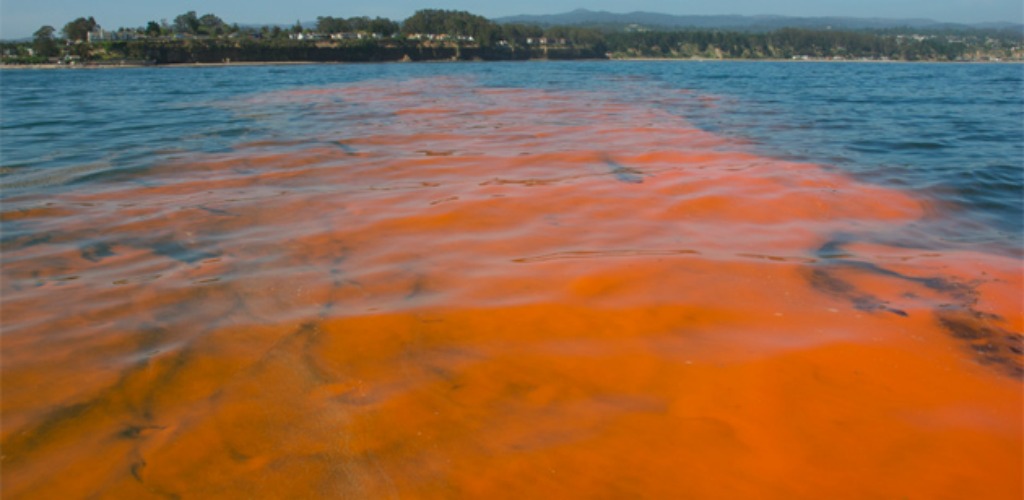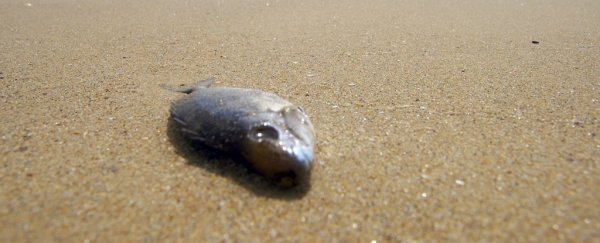You do not want to venture to Chile's Pacific shores right now, because over the last few months, tonnes and tonnes of dead sea creatures, from clams to whales, have washed ashore, leaving the tranquil beachfront covered in gore.
This isn't hyperbole: reports estimate that roughly 40,000 tonnes of salmon, 8,000 tonnes of sardines, 300 whales, and countless clams are now dead and washing up to various places on the coast. That's a lot of death, and researchers say it's all thanks to El Niño.
El Niño has been causing a swathe of different problems around the world this year. For many countries, these problems are economic. For Chile, it's wreaking havoc on the wildlife. But why?
While headlines are quick to make it sound scary, El Niño is, at its core, a climate cycle. As the US National Oceanic and Atmospheric Administration (NOAA) explains, El Niño causes warm sea water to shift directions, which prompts a chain reaction of weather events across the affected areas. This can range from drought to flooding in areas that aren't used to having either.
La Niña, on the other hand, is the opposite, where colder waters move in. If we really simplify it down, we can think of these climate cycles like inhaling and exhaling. You inhale cold air and exhale warm air. Only, you know, you're the Pacific Ocean.
While these two phases go hand-in-hand a lot of the time, El Niño is much more common, which is why you're probably so used to hearing about it in the news.
When ocean waters suddenly warm up, it can trigger a range of events that can prove deadly for sea creatures - and in Chile's case, that means red tides.
Also known as harmful algal blooms (HABs), a red tide is a natural phenomenon caused by algal blooms that grow so large, they actually change the colour of the ocean. They can also deplete oxygen in the water and release toxins that can cause illness in humans and other animals, making a one-two punch for sea life.
 Red Tide. Credit: UCSB
Red Tide. Credit: UCSB
"[HABs] occur when colonies of algae - simple plants that live in the sea and freshwater - grow out of control while producing toxic or harmful effects on people, fish, shellfish, marine mammals, and birds," explains the NOAA. "The human illnesses caused by HABs, though rare, can be debilitating or even fatal."
According to Giovanna Fleitas from Phys.org, red tides are common off the coast of Chile, though this year's event has stretched much further north, which has caused the government to ban fishing in the affected area. This means that not only are the sea creatures dying, many fishermen are now out of work.
Chile is no stranger to El Niño - it typically strikes there every couple of years - but this time it's more intense. It's not clear why, but some researchers have suggested that these 'super' El Niños could be linked to the effects of climate change.
Since there are already so many factors at work behind every El Niño event, it's been difficult for researchers to investigate a link between this and the effects of climate change. It will take more research to draw a firm conclusion, but scientists warn that something is definitely causing more El Niños than before.
While most researchers agree that El Niño is to blame for the recent deaths of ocean life, there are, of course, those that don't. Some scientists have said that the whale deaths have nothing to do with El Niño, because there is no solid link connecting both events, Fleitas reports, while others also point to fish farms as the cause of the salmon deaths.
While the debate will likely continue, the message is clear for Chile: more oceanic research is needed to understand all the variables that cause such widespread die-offs. Hopefully, as waters off Chile's coast start to cool, things will return to some semblance of normalcy for the locals.
